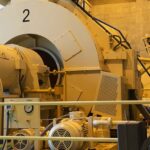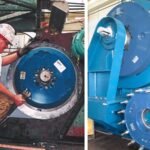Common Rotary Equipment Failures and How to Prevent Them
Misalignment is a leading cause of failure in rotary systems. It happens when shafts are not in the correct position. This can lead to vibration and heat. It also causes stress on connected components. Engineers must carry out regular checks. Laser alignment tools can help detect the problem. Worn couplings often indicate the start of misalignment. Maintenance teams should act quickly. General Kinematics suggests consistent accuracy checks. Correct alignment extends the equipment life.
Dealing with Equipment Imbalance
An imbalance happens when rotating parts are uneven. This can cause serious vibration. It can also lead to bearing damage. Over time the whole system can fail. So, engineers need to detect it early. Imbalance often comes from dirt build up. It can also be due to worn blades. Teams should clean units at set intervals. They should also replace faulty parts fast. General Kinematics supports proper balance testing. Balanced systems last longer and perform better. This also creates safer and more efficient operations.
Preventing Bearing Wear
Bearing wear is a common challenge. It arises from poor lubrication and dirt. It can also result from heavy loads. Bearings are vital for smooth operation. The failure of bearings can stop production. Therefore, engineers must set strict lubrication rules. They should also seal bearings from dust. Routine inspections can spot early wear. Teams must change faulty bearings on time. Using high quality lubricants improves life. Scheduling corrective tasks prevents costly breakdowns. The right care ensures lasting performance.
Troubleshooting Rotary Performance Faults
If systems show high vibration levels then checks are needed. Teams must shut down and inspect parts. Faulty couplings may break under force. Engineers should track data over time. This helps in locating recurring issues. As trends become clear teams can act. Proper records make problem solving faster. It improves planning for the next service. A planned approach keeps assets in good shape.
Building a Strong Maintenance Program
A strong program reduces equipment problems. It should include inspections repair and upgrades. Teams must train staff to detect early faults. Clear schedules help prevent last minute repairs. The plan must focus on high risk parts. Sensors can track heat and motion. They warn of faults before failure. Data from sensors guides maintenance actions. This makes service tasks more precise. General Kinematics advises planned investments in monitoring systems. Proper planning lowers costs and extends service life.
Long Term Reliability Practices
The goal is to keep systems stable for many years. This is only possible with consistent care. Each part must get equal attention. Engineers should review past reports for insight. If recurring faults appear then designs may need changes. As teams learn from failures, they improve methods. This builds a strong reliability culture. Finally, the rotary equipment must be tested after every repair. This ensures safety and peak performance.
















